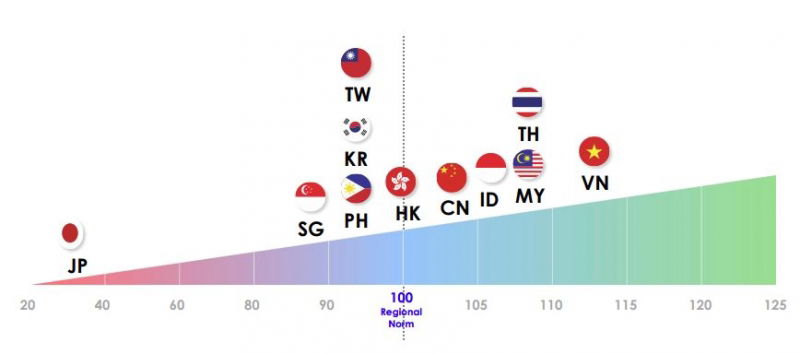
Opinion: 3 areas to note when implementing change management amidst uncertainty
share on
We now live in the new normal which is an outcome of changes in consumer behaviour caused by a significant recalibration of consumer needs and beliefs that have taken place as a result of the pandemic. This is further exacerbated by the uncertainty brought about by the pandemic, including the impact of lock-downs and general stress in the global economy. These result in organisational restructuring and retrenchments as organisations seek to maintain lean structures and be in a “conserve mode”.
Whilst the pandemic has led to a variety of different responses from Asian markets, it is possible to distill clear similarities to derive three key areas to be mindful of when navigating change management during these uncertain times.
1. The domino effect on the CX journey requires a proper remapping and repositioning of your business
Pre-COVID-19, consumers had already begun to disrupt the traditional consumer experience (CX) journey in the last five years. However, it took the pandemic to create the domino effect on the CX journey impacting external customers, who are also internal customer in organisations. Companies have to confront this and move from the “re-patching” to redesigning the new CX journeys with positive and relevant experiences across all channels and touchpoints.
The initial stage of new normal witnessed organisations reacting by pivoting to make the changes through minor tweaks like rushing to set up their eCommerce. However, such organisations soon realise such “patching” without a full comprehension of the shifts in CX journey is insufficient to build competitive advantage over their competitors in the longer term .
For example, while many believe that the travel industry has collapsed, it was found in research that many people miss business and holiday travels, to the extent it is a key worry. However, what can a viable CX journey of a traveler be like during and post-pandemic if one is to fully plan and designed an experience in preparations for gradual opening of the travel route?
While we know what to expect from airport to destination to hotel pre-pandemic, we do not know what to expect post-pandemic unless that is mapped and communicated to us in a manner that resonates with travelers’ CX. Fear such as the standards of hygiene can be reduced with an effective communication plan and without fear, one of the key barriers to adoption is eliminated.
2. Be mindful of the role of psychodynamics and unconsciousness of change
Some of the disruptive changes in the new normal are physical but many are also psychological. The uncertainty of the pandemic in health, political and trade has also led to heightened defense mechanisms, such as anxiety that can impact the progress of change management.
The unprecedented disruption of the CX journey can cause people experiencing change to have physical and psychological unease or discomfort due to the uncertainty of change. Many people experiencing change have recounted that they faced situations where they experienced primal and survival instincts soar with the need to protect oneself, family and business being put above everything else.
Thoughts also form in people’s minds due to distancing, resulting in greater defense mechanisms and impacting mental health. There are different approaches to address this discussed for instance understanding your triggers, reframing the situation, practicing gratitude, therapy coaching and mindfulness.
Financial insecurity is also a key trigger to unconscious thoughts and behavior during the pandemic. During this period, balancing savings versus investment is evident. Through a deeper understanding behind the dynamics and needs, institutions and the government may be able to provide tailored solutions through innovation, with the purpose of helping the community during the pandemic.

While some markets had a head-start in digitalisation and are coping well, for other markets the accelerated rate of digitalisation during the pandemic has triggered fear and insecurity, especially with the Baby Boomers. Therefore, a deep understanding of change from a psychodynamic perspective can provide insights how to better manage and implement change with empathy.
3. Get to know your customers again as they have new needs and priorities
Changes in consumer needs, beliefs and behaviours during the pandemic has led them to reappraise brands they have been loyal to. At the same time, consumers would be open to try brands that they would not have considered previously had their needs, beliefs and behaviours not been impacted by the pandemic. Therefore, they may not purchase their usual brands as frequently nor at the same quantity and may also put on hold their previous regular purchases. All of these are driven by many factors which needs to be examined in detail if we are to navigate change management in these disrupted times.
For instance, the heightened safety sentiments has led to the shift of emphasis on experiential food, retail and travel that takes place out of home and which focus on consumer luxury. These shifts have even driven a spike in home improvements and renovations in some cases. Such safety concerns and focus on personal health and hygiene, i.e. a redefinition of personal and household hygiene, have posed an opportunity for companies prepared to innovate around these needs.
In change management, it is also essential to understand pricing and priorities of each category, be it in-home and out of home, as well as shifts of consumer behaviour to channels that are safer and more hygienic for consumers to access their solutions.
The writers are founder, CEO and chief change catalyst of APAC Global Advisory, Wong Mei Wai, and consumer insight change catalyst and co-founder of Acorn Group, Kwan Chong Wah.
Photo courtesy: 123RF
share on
Free newsletter
Get the daily lowdown on Asia's top marketing stories.
We break down the big and messy topics of the day so you're updated on the most important developments in Asia's marketing development – for free.
subscribe now open in new window
